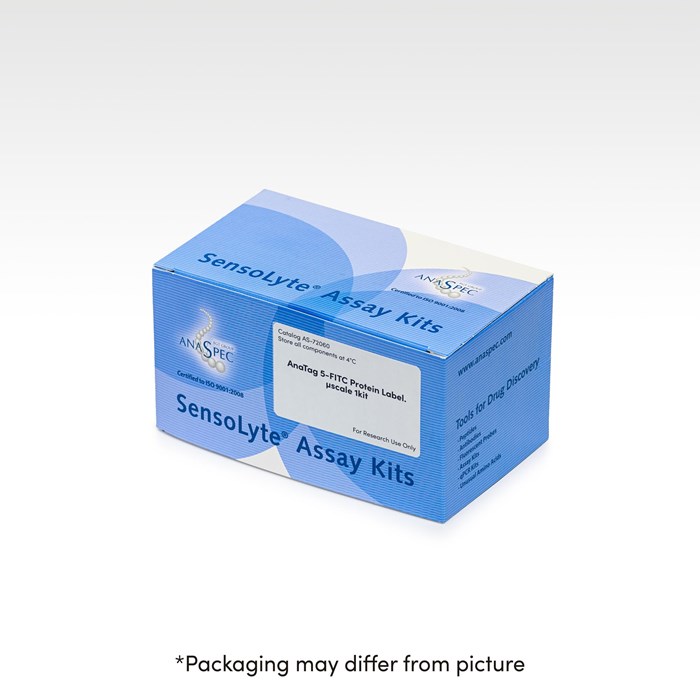AnaTag™ 5 - FITC Microscale Protein Labeling Kit - 1 kit
- Cat.Number : AS-72060
- Manufacturer Ref. :
-
Availability :
In production
- Shipping conditions : Ice delivery fees must be applied
Alternative choices
Fluorescein isothiocyanate (FITC) remains one of the most popular fluorescent labeling reagents, probably due to the low cost of the material. 5-FITC and 6-FITC have very similar absorption and fluorescence spectra. However, the isomers may differ in their binding and reactivity to proteins, and the conjugates may elute under different chromatographic conditions or migrate differently in electrophoretic gels. 5-FITC is more widely used than 6-FITC isomer for protein labeling. FITC-protein conjugates are suitable for immunofluorescent staining, in situ hybridization, flow cytometry and other biological applications. The kit has all the essential components for performing the conjugation reaction and for purifying the FITC-protein conjugates. The kit is good for three conjugation reactions with each reaction, labeling up to 200 µg IgG.
Note: AnaTag kits are not intended for peptide labeling.
Specifications
| Packaging | |
| Kits components |
|
|---|---|
| Properties | |
| Absorbance (nm) |
|
| Emission (nm) |
|
| Storage & stability | |
| Storage Conditions |
|
| Activity | |
| Application | |
| Detection Method | |
| Research Area | |
| Sub-category Research Area | |
| Usage |
|
| Codes | |
| Code Nacres |
|
Downloads
Citations
Pneumocystis mediates overexpression of antizyme inhibitor resulting in increased polyamine levels and apoptosis in alveolar macrophages.
J Biol Chem . 2020 Jul 14 ; 284(12) 8174 | DOI : 10.1074/jbc.M805787200.
- C-P. Liao
- et al
A comparison of the biochemical modifications caused by toxid and nontoxic protein oligomers in cells.
J Cell Mol Med . 2011 Sep 26 ; 15(10) 2106 | DOI : 10.1111/j.1582-4934.2010.01239.x.
- M. Zampagni
- et al
